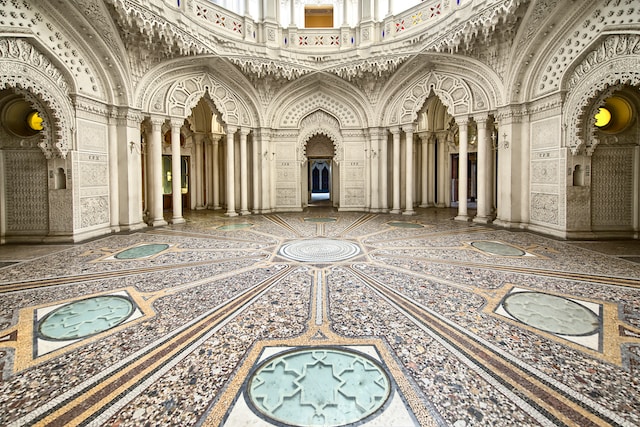Introduction – Historicity in architecture
Architecture is further than structures and structures; it reveals who we’re as individualities. From our homes to towers in major metropolises, armature tells a narrative about history, beliefs, and culture. In this composition, we’ll examine why armature is special and explore why studying its history is vitally important.
Historicity refers to looking at things from an historical viewpoint. When discussing architecture’s historicity, we mean looking at how building designs have changed through time – almost like going on an adventure through time travel! By studying their buildings we can see what life was like thousands of years ago.
Architecture is a way for us to express ourselves, much like art or music does. Architecture shows what people value and believe in. By studying its history, we can gain insight into different cultures that have influenced each other through architecture over time – it’s truly amazing journey that helps us gain greater knowledge of our surroundings!
Purpose of Exploration – Historicity in architecture
Why should we care about old buildings and ancient designs? Exploring the history of architecture allows us to appreciate the creativity and innovation of people from the past while teaching us valuable lessons that we can implement today. By looking at how people solved problems and built beautiful structures long ago, we can find inspiration for our own lives.

Historical Architecture’s Essence – Historicity in architecture
Timeless Designs
Some designs never go out of fashion – consider Egypt’s pyramids and Greek temples from millennia ago; their timeless designs still amaze us today. What makes them timeless? It’s their beauty, their balance, and the way they connect with nature. These designs teach us that true beauty doesn’t fade away; it lasts forever.
Influence of Past Eras – Historicity in architecture
Every era leaves its mark on architecture. The Romans were famous for their arches, while the Greeks loved columns and open spaces. Even today, we can see these influences in modern buildings. By researching the past, we can gain an understanding of how different ideas and styles have contributed to how we build today. Like a puzzle piece adding up, all contributions contribute towards completing the picture of today.
Preservation of Culture – Historicity in architecture
Buildings are more than bricks and stones; they’re a part of our culture. When we preserve old buildings, we’re keeping a piece of history alive. Imagine visiting an ancient castle. You can almost hear and feel its inhabitants, their joys and sorrows. Conserving these landmarks is a way of honoring our past while strengthening culture.
Modern Interpretations
Fusion of Old and New
In today’s world, architects often blend old and new designs to create something unique. This fusion can be seen in buildings that combine traditional materials with modern technology. Reimagining history helps us stay connected to our roots while welcoming the future.
Revival Styles – Historicity in architecture
Sometimes, architects look to the past for inspiration and create buildings that remind us of a different time. These revival styles can bring back the elegance of Victorian homes or the grandeur of ancient Greek temples. By reviving these styles, architects pay tribute to the past and keep these beautiful designs alive in our modern world.
Contemporary Takes on Traditional Concepts – Historicity in architecture
Modern architecture doesn’t always mean glass and steel. Many architects take traditional concepts, like the use of natural light or open spaces, and give them a contemporary twist. These designs show that old ideas can still be fresh and exciting, even in our fast-paced world.
Case Studies – Historicity in architecture
Ancient Structures
Egypt’s pyramids, China’s Great Wall and Rome’s Colosseum are examples of ancient structures still standing today, providing insight into their builders, their beliefs and ways of life. Studying these structures helps us appreciate the skill and creativity of ancient builders.
Renovated Buildings – Historicity in architecture
Sometimes, old buildings get a second chance at life. Through renovation, architects can take a worn-out building and make it new again. An old factory might become a trendy apartment complex, or a rundown church might turn into a cozy bookstore. These transformations show how we can honor the past while making room for the future.
Modern Designs with Historical Echoes – Historicity in architecture
Some modern buildings have a touch of history in their design. Office buildings may feature facades reminiscent of medieval castles or museums may use shapes and patterns from ancient art as designs to connect history to our lives today. Such designs provide a connection between past and present – history is an integral part of life today!
Impact on Society – Historicity in architecture
Cultural Identity: Buildings are like fingerprints of a culture. From the intricate designs of Indian temples to the sleek lines of modern American skyscrapers, architecture helps define who we are. It tells the story of our past, reflects our values, and shapes our identity. When we preserve old buildings or create new ones that honor our heritage, we strengthen our cultural identity.
Educational Value: Studying architecture is like opening a history book. By looking at buildings, we can learn about art, science, politics and more. Schools and museums use architecture as an interactive learning experience for their students about different cultures and eras – providing us with a tangible means of exploring history and making sense of our environment.
Touristic Appeal: Have you always dreamed of visiting iconic buildings like Paris’ Eiffel Tower and Sydney Opera House? Tourists from all over come here for these sights that not only draw crowds of admirers, but also symbolize the spirit of their respective places. When we visit these architectural wonders, we connect with something bigger than ourselves. It’s an experience that can inspire and enrich our lives.
Challenges and Controversies – Historicity in architecture
Balancing Tradition and Innovation: How can we acknowledge our past while welcoming in the future? This question lies at the center of many architectural discussions. Some prefer keeping old buildings exactly as they are while others desire updating them with contemporary features. Finding an equitable balance between tradition and innovation can often prove to be challenging and contentious.
Ethical Considerations: Building new structures or renovating old ones often raises ethical considerations. For instance, should we tear down an historic building to make room for a shopping mall? How can we ensure new structures are environmentally-friendly? Architects and communities must work collaboratively in finding solutions that balance past with present values.
Debates over Authenticity: What makes a building authentic? What matters more: the materials, design or usage? This question often sparks intense discussions when it comes to renovating old buildings, especially since some individuals believe that using modern materials or altering its design could take away its authenticity. Others argue that these changes can breathe new life into a structure and keep it relevant.
Future Directions – Historicity in architecture
Technology’s Role: Technology is revolutionising architecture. Imagine buildings that can change shape at will, windows that darken or lighten at the push of a button, and homes producing their own energy; all thanks to technology. From 3D printing to smart materials, innovation has opened up new vistas in terms of building design – providing architects with unprecedented opportunities for creativity.
Sustainability Considerations: Our planet needs us all, and architects are rising to meet this challenge. Sustainability has become a core tenant of modern architecture; not simply an empty buzzword. Sustainable buildings require less energy consumption and waste reduction while being in harmony with nature – for instance green roofs covered in plants; solar panels which convert sunlight to electricity or rainwater collection systems to conserve precious water supplies are examples of such designs. These sustainable designs show that we can live comfortably without harming the environment. It’s a trend that’s here to stay and will shape the future of architecture.
Potential for Continued Evolution: Architecture is always evolving, and the future holds even more exciting changes. Perhaps we’ll see floating cities that can adapt to rising sea levels or space habitats that allow us to live on other planets; the possibilities are truly limitless; all that stands between us and these imagined realities is imagination. One thing’s certain though – architecture will continue to innovate, transform, and inspire. As with all areas of human endeavor, its field never remains stagnant and always finds new ways to enrich lives and enrich people’s lives.
Conclusion – Historicity in architecture
Architecture is more than buildings: it is a living art form that chronicles humanity. From ancient structures such as pyramids and temples to contemporary innovations like smart buildings and sustainable designs, architecture reflects our past, shapes our present, and charts our future. Architecture celebrates creativity while honoring tradition while facing challenges head on and welcoming change with open arms.
Studying architecture’s history isn’t just for architects or historians; it enriches all our lives and connects us to an extraordinary, beautiful world. Architecture history helps us gain perspective on who we are, our backgrounds, and where we’re heading. It teaches us about different cultures while inspiring innovation while challenging us to care responsibly for our environment – truly enriching lives while linking us all closer together as one world.
Final Thoughts on Historicity’s Role in Architecture – Historicity in architecture
Historicity in architecture is like a bridge that connects us to our roots. It reminds us that every building has a story, every design has a purpose, and every innovation builds on the wisdom of the past. By honoring our architectural heritage and exploring its future directions, we keep that bridge strong and vibrant. By following history’s lessons, we ensure they continue to guide, inspire and challenge us as we build a world that’s not only functional but also meaningful.
At its core, architecture’s history is our history – something we all contribute to and that continues to unfold today. Looking ahead with wonder, responsibility, and optimism allows us to anticipate its path with optimism: buildings reflect who we are as individuals while their shadows and lights offer glimpses into future potentialities – they provide a means by which we can explore, learn from each other and build structures shaped not solely with bricks but with heart.

